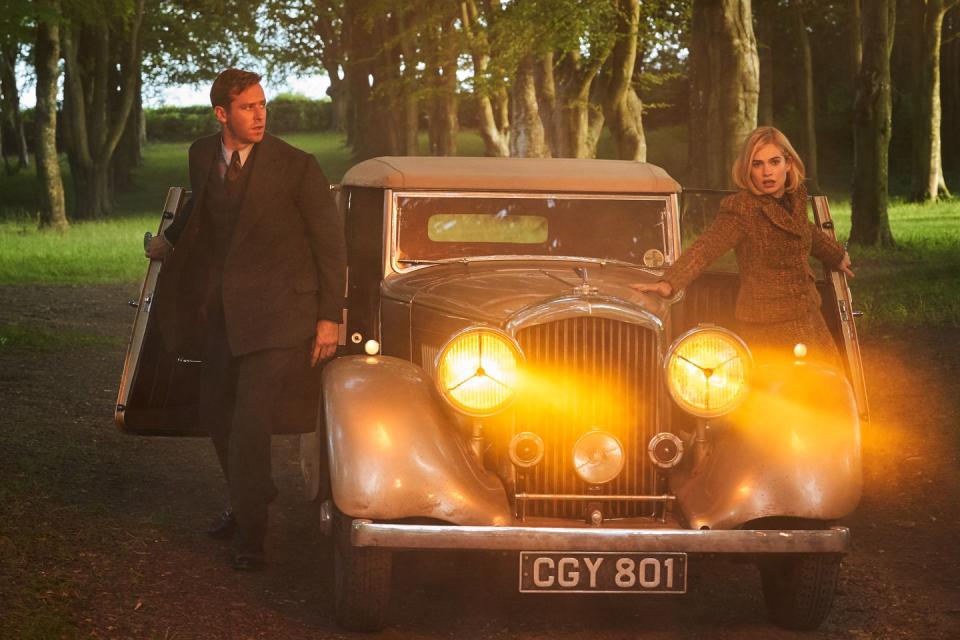The Hidden Messages Inside Netflix's New Rebecca

There’s a fine line between a dream and a nightmare. The famous opening of Daphne du Maurier’s 1938 thriller Rebecca reads “Last night I dreamt I went to Manderley again,” but for anyone familiar with the story—a masterclass in suspense that follows an unnamed young woman who marries into dizzying privilege—it’s clear that the unnamed narrator’s experience at Manderley, the sprawling estate of which she’s found herself chatelaine, is anything but dreamy, and it’s thanks in part to one terrifying monogram.
In a new adaptation of the story directed by Ben Wheatley and premiering October 21 on Netflix—the first film version since Alfred Hitchcock’s 1940 Oscar winning classic—all of the high suspense that’s made Rebecca a touchstone is still in place. A young woman (played by Downton Abbey’s Lily James) is swept off her feet by the exceedingly rich Maxim de Winter (Armie Hammer), only to find her fairytale derailed when she moves into his grand, eerie home and battling against forces both human (the deliciously wicked housekeeper Mrs. Danvers, played by Kristin Scott Thomas) and seemingly supernatural.

It’s a horror film without any of monsters or gore on which modern thrillers rely; the scariest parts of Rebecca are in fact often what the audience can’t see. Except, of course, for that monogram. You see, James’s character seems to be haunted by the spirit of her husband’s late first wife. And while we never see Rebecca on screen, there isn’t a scene she’s not part of—a script R appearing on stationery and embroidery and, if you look closely enough, flocks of menacing birds in the sky. “In the Hitchcock film, there’s an R on an address book, so we wanted to take that and use it as a symbol for horror all the way through,” says production designer Sarah Greenwood. “We got it in everywhere.”
It was no small feat. From the moment James’s character finds a book of poetry with that malignant monogram on its cover, the letter reappears again and again, adding to the uneasy feeling that the former lady of the house is never truly out of the picture. “There was a realization that we actually had to have a line in the budget for Rebecca,” Greenwood says. “She’s a character you never see, but she’s absolutely everywhere.”

First wives are almost always formidable foes for their successors, but part of what makes Rebecca especially frightening is that her perceived polish and poise—and the sheer number of items she’d had stamped with her initial, a one-percent quirk still seen recently in the brass lettering outside Jeffrey Epstein’s mansion and the L.L. Bean bags toted at Teterboro—are entirely at odds with the naivety of her replacement.
“Everything about Rebecca is seemingly perfect—on the surface,” says Greenwood. “We decided that in the 1930s, the grand ladies of the house would have kept their diaries, their lists of who’s visited, and all of their calling cards. Because Rebecca did everything immaculately, anything Lily’s character finds is completely intimidating.”
Still, the fear Rebecca delivers hasn’t turned Greenwood off of good writing paper, which is having a bit of a renaissance these days. “It’s such a treat to have beautiful stationery, and I think it’s something we should go back to,” she says. “Though I’m not sure I’d get mine with an R.”
You Might Also Like


